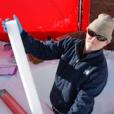
Data analysis - XFM beamline
Data analysis on the X-ray fluorescence microscopy beamline at the Australian Synchrotron.

Showing 81 - 100 of 518 results

Data analysis on the X-ray fluorescence microscopy beamline at the Australian Synchrotron.
Radiocarbon dating at ANSTO has supported research that vastly extends the known timeline of the Aboriginal occupation of South Australia’s Riverland region.

ANSTO plays a leading role in measuring and characterising fine particles from a range of locations around Australia and internationally.
ANSTO’s user office in Melbourne offers access to the Australian Synchrotron, a world-class research facility with over 4,000 user visits per year. ANSTO seeks collaboration and partnerships with research organisations, scientific users and commercial users.

The Australian Synchrotron has an on-site Guesthouse for users and AS guests.
Technical information on the SAXS / WAXS beamline at the Australian Synchrotron.


Information has been provided to assist with the preparation of experiment proposals and beamtime.

ANSTO's OPAL reactor is one of the world's most advanced and reliable research reactors today. To ensure we can continue operating OPAL safely and reliably and maximise utilisation, ANSTO must regularly carry out maintenance and upgrades.
Australia assists in the collection of marine sediments to support contaminant quality control measures by IAEA.
On behalf of ANSTO thank you for your interest in our tours. We hope your visit to ANSTO will be both enjoyable and informative.
ALTA 2018
A collaboration of Australian scientists has used ANSTO’s Australian Synchrotron to measure the amount of carbon that is captured in microscopic seams of deep-sea limestone, which acts as a carbon sink.

Radiocarbon dating is a well-known method for determining the age of materials up to the age of approximately 50,000 years.

Stable isotopes are high useful in investigations of environmental samples.
Kowari, a residual stress diffractometer, can be used for ‘strain scanning’ of large engineering components as large as 1000 kilograms.

Helen's research interests focus on determining the thermoelastic properties and crystal chemistry of a range of minerals which are of interest in a variety of environmental, planetary geology and industrial settings.